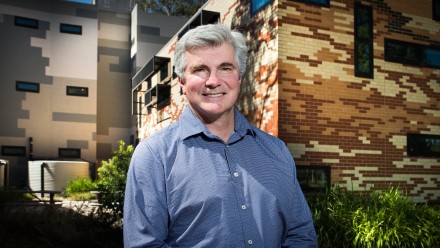ANU Below Zero Emissions: Energy and Buildings
How might ANU reduce greenhouse gas emissions from its buildings as rapidly as possible?
About this Event
This digital workshop (via zoom) provides an opportunity to share your ideas for how the Australian National University (ANU) might reduce greenhouse gas emissions from our buildings as rapidly as possible.
The event will kick off with an introduction by the university's Chief Operating Officer, Paul Duldig. This will be followed by very short presentations to set the scene by:
- Prof Ken Baldwin, Director, Energy Change Institute
- Representative from Facilities & Services Division, ANU
- Jess Catling, Master of Energy Change student, ANU
Participants will then be invited to share their ideas for how ANU can achieve this goal (40 mins). All contributors are requested to keep their statements very short and concise to allow a range of people to contribute.
This is a public workshop event and will be recorded. The recording will be made available through the ANU Below Zero website and to those who register using the Registration link above. Please read the Consultation Information Sheet, User Guide and Moderation Guidelines which detail important information and the terms and conditions of engaging with this process.
ANU Below Zero Consultation
In February 2020, ANU called for urgent action to address climate change and committed to reduce our greenhouse gas emissions to below zero, as soon as possible.
ANU are now undertaking a consultation process around how we can address climate change. Consultation is open from 8 Sept -20 October 2020 and you can participate by:
- Registering for this workshop
- And / or contributing your ideas and build on other people’s ideas via our online idea capturing platform - Ideanote*
*In order to post/save your idea, you will be asked to join ANU Below Zero after hitting the submit button. You can use your ANU ID and password by clicking the Single Sign On (SAML) option.
The consultation has been divided into seven themes. You can also engage on the other themes:
- Travel
- Behavioural Change
- Reducing atmospheric greenhouse gases
- Integrating Below Zero operations, research & teaching
- Finance, investment and purchasing
- Leadership and targets
Background on energy and buildings
Currently greenhouse gas (GHG) emissions from buildings comprise one of the largest sources of greenhouse gas emissions for ANU. This includes emissions from gas powered heating, as well as air conditioning and lighting.
As well as reducing operational emissions such as these, an important principle in any emissions reduction strategy is ensuring that buildings are low emissions, net zero or ideally below zero emissions over their lifetime, including from construction through to demolition.
The Acton Campus Master Plan has identified the need for a coherent and connected campus with clearly defined hubs. This applies not just to the visual and experiential aspects of the campus, but is also important in managing our energy requirements and resources. Rather than simply taking a building-by-building approach, we need to factor in the campus’s broader energy requirements, for example by using waste heat generated in one building to provide heating and cooling for other neighbouring buildings.








